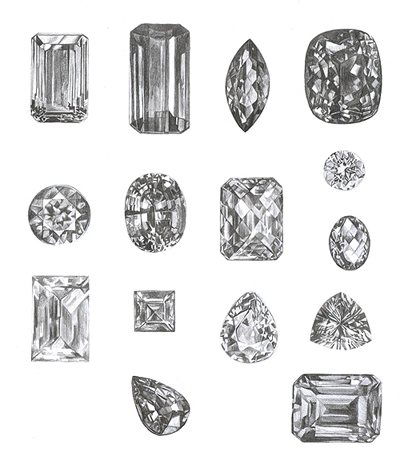What are conflict diamonds, sometimes called blood diamonds?
Conflict diamonds, sometimes called blood diamonds, are diamonds that are sold to fund the unlawful and illegal operations of rebel, military and terrorist groups. Countries that have been most affected by conflict diamonds are Sierra Leone, Angola, Liberia and the Democratic Republic of Congo — all places where citizens have been terrorized, mutilated and killed by groups in control of the local diamond trade.
Wars in most of those areas have ended or at least decreased in intensity, but conflict diamonds from Côte d’Ivoire, in West Africa, and Liberia are still reaching the trade labeled as conflict-free diamonds.
In 2000, South African countries with a legitimate diamond trade began a campaign to track the origins of all rough diamonds, attempting to put a stop to blood diamond sales from known conflict areas. Their efforts eventually resulted in The Kimberley Process Certification Scheme (KPCS), an international effort to rid the world of conflict diamonds.
Kimberley Process Goals
The goals of the Kimberley Process are to document and track all rough diamonds entering a participating country, with shippers placing stones in tamper-proof shipping crates and providing enough detailed information about their origins to prove they did not originate in a conflict zone.
The KPCS isn’t fully operational among its members — probably normal for an agreement that involves the cooperation of dozens of governments and non-governmental agencies. Many countries haven’t even committed to the program.
The goals of the KPCS will take time to achieve, but what’s already been accomplished is significant. Because it’s a self-regulating program, additional controls are necessary to truly ensure that blood diamond trade is halted — or at least minimized.
How consumers can help stop blood diamond trade.
Retailers cannot guarantee that the diamond you purchase is not a conflict diamond. As consumers, we have the power to change that by demanding details about the diamonds we buy. Demanding proof that a diamond is conflict-free sends a powerful message to the world that we will not support an industry or nation that helps fund terror groups. Change won’t happen overnight, but it will happen if we are persistent.
Canadian diamonds – the Code of Conduct
Canada has made progress in identifying diamonds originating in its mines. The Voluntary Code of Conduct for Authenticating Canadian Diamond Claims sets a standard for authentication of claims that a diamond is Canadian — and conflict free.
Adhering to The Code requires each company to initiate a paper trail that tracks a diamond’s progression from the mine to its retail destination. The Code also includes rules for proper handling, packing and marking of all diamonds that are represented as Canadian stones. Even with the guidelines, there’s no way to absolutely guarantee a diamond is Canadian, but the process definitely helps eliminate doubt.
The Canadian program is voluntary, so not all retailers participate. Those who do must provide consumers with:
- The diamond Identification Number
- The retailer’s name and address
- An invoice number and the date of the invoice
- The polished diamond description
- An explanation of the Code
A list of signatories of the Code is available online, naming retailers and wholesalers who are committed to following the Code’s procedures.
It’s difficult for most of us to imagine what life is like in countries where diamonds are the source of so much chaos and suffering, and the connection between terror and diamonds is not something that’s reported heavily in the press. The 2006 movie Blood Diamond, starring Leonardo DiCaprio, should help make the issues more mainstream, if only temporarily.
Take some time to learn more about the problems that conflict diamonds create, then follow your heart the next time you shop for a diamond. – About.Com









1 comment so far ↓
Genial fill someone in on and this post helped me alot in my college assignement. Say thank you you as your information.
Leave a Comment